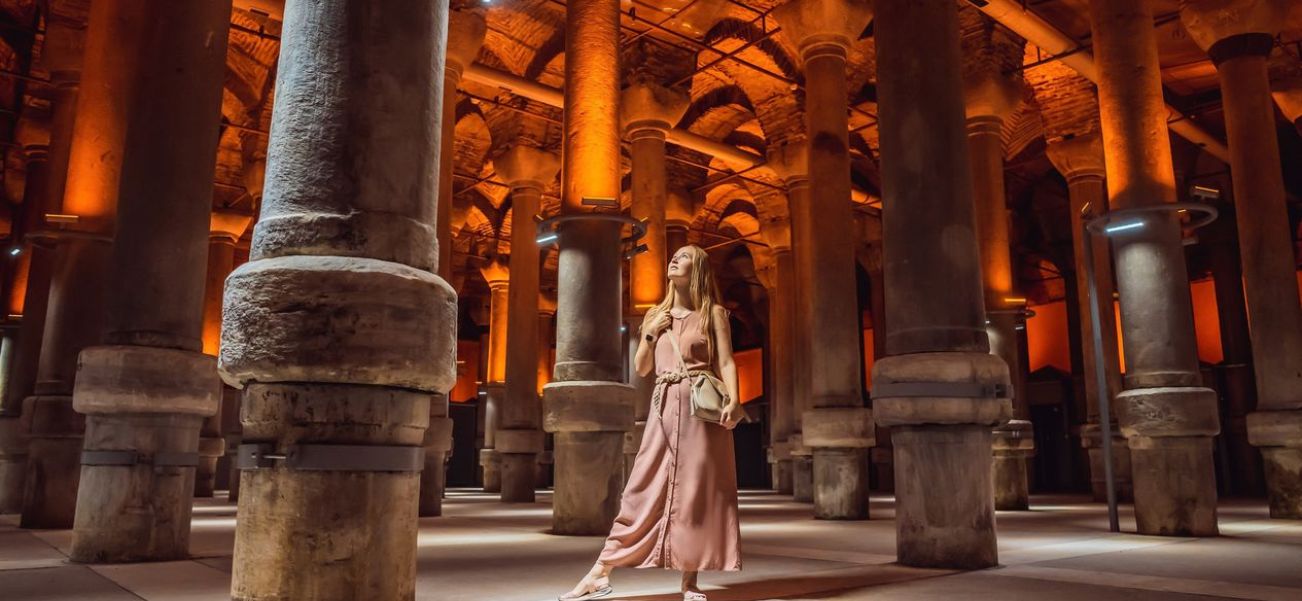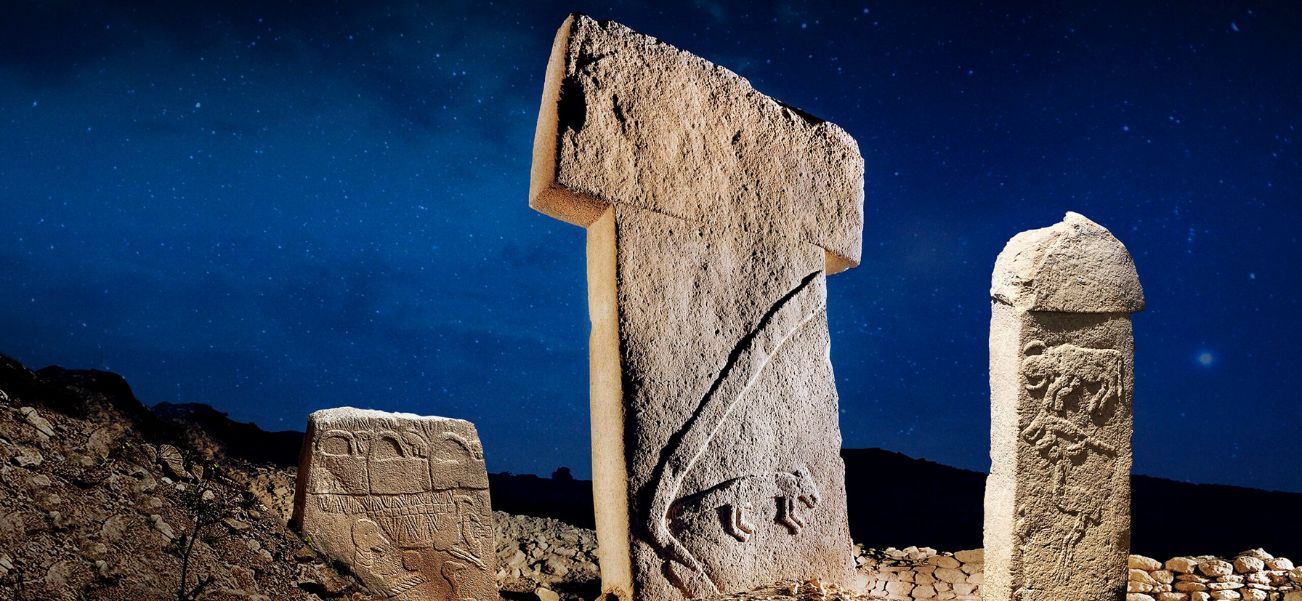
The Basilica Cistern: A Hidden Gem Beneath Istanbul
When people think of Istanbul, iconic landmarks like the Hagia Sophia, Blue Mosque, and Topkapi Palace often come to mind. But beneath the bustling streets of this historic city lies a hidden treasure—the "Basilica Cistern (Yerebatan Sarnıcı)".
This ancient underground water reservoir is one of Istanbul’s most mysterious and awe-inspiring attractions, offering visitors a glimpse into the city’s Byzantine past.
In this guide, we’ll explore the history, architecture, and secrets of the Basilica Cistern, along with practical tips for visiting. Whether you're a history buff, an architecture enthusiast, or simply looking for unique things to do in Istanbul, this subterranean marvel should be at the top of your list.
BASILICA CISTERN: ISTANBUL'S HIDDEN WONDER
Listen to this audio book about the Basilica Cistern:
What is the Basilica Cistern?
The Basilica Cistern, also known as the Yerebatan Sarnıcı (Sunken Palace) in Turkish, is the largest surviving Byzantine underground cistern in Istanbul. Built in the 6th century during the reign of Emperor Justinian I, it once stored water for the Great Palace of Constantinople and later supplied water to Topkapi Palace.
With its 336 marble columns, dim lighting, and eerie atmosphere, the cistern feels like a subterranean cathedral. The most famous features are the Medusa heads, placed upside down and sideways at the base of two columns, adding to the site’s mystique.
Hagia Sophia: A Timeless Masterpiece in Istanbul
Why Visit the Basilica Cistern?
- Historical significance A masterpiece of Byzantine engineering.
- Unique atmosphere A cool, quiet escape from Istanbul’s crowds.
- Mysterious legends The upside-down Medusa heads spark curiosity.
- Photography opportunities Stunning reflections and dramatic lighting.
Istanbul's Byzantine Gems: Exploring Constantinople's Legacy
History of the Basilica Cistern
Byzantine Engineering Marvel
Commissioned by Emperor Justinian I in 532 AD, the cistern was built on the site of an earlier basilica (hence the name). It was part of a vast water filtration system that supplied Constantinople with fresh water from the Belgrad Forest, 19 kilometers away.
At 140 meters long and 70 meters wide, the cistern could hold 80,000 cubic meters of water, enough to sustain the city during sieges.
Ottoman Rediscovery
After the Ottoman conquest in 1453, the cistern was largely forgotten until Petrus Gyllius, a Dutch traveler, rediscovered it in 1545. Locals were drawing water from their basements, unaware of the massive structure beneath them.
Istanbul Archaeological Museums: A Portal to Ancient Civilizations
Modern Restoration
The cistern underwent several restorations, most recently in 2022, when it reopened with improved lighting, walkways, and an immersive multimedia exhibition.
Architectural Highlights of the Basilica Cistern
The Forest of Columns
The cistern is supported by 336 columns, each 9 meters tall, arranged in 12 rows. Most were recycled from older Roman structures, featuring different designs:
- Ionic
- Corinthian
- Doric
The Medusa Heads
The most mysterious elements are the two Medusa heads used as column bases:
- One is upside down
- The other is sideways
Why are they there? Theories suggest:
- They were reused from a Roman building.
- Placing them upside down neutralized their mythical power (Medusa turned people to stone).
- They were simply used for structural support.
The Hen’s Eye Column
One column is carved with peacock eyes and tears, believed to honor the hundreds of slaves who died during construction.
Reflections & Lighting
The shallow water creates stunning reflections, enhancing the cistern’s mystical vibe. The 2022 restoration added atmospheric lighting, making it even more photogenic.
Legends & Mysteries of the Basilica Cistern
The Crying Column (Column of Tears)
Visitors often try to insert a finger into the column’s hole and make a full-circle turn for good luck—a tradition inspired by its tear-like carvings.
Medusa’s Curse
Some believe the upside-down Medusa heads were placed to ward off evil spirits. Others say they were positioned disrespectfully to diminish pagan influence.
Hidden Chambers?
Rumors persist that secret passages connect the cistern to Topkapi Palace or even the Hagia Sophia.
Visiting the Basilica Cistern: Practical Tips
Location & How to Get There
- Address Alemdar Mah., Yerebatan Cad. 1/3, Sultanahmet (near Hagia Sophia).
- Public Transport Tram to Sultanahmet (T1 line).
Opening Hours & Tickets
- Opening Hours 9:00 AM – 7:00 PM (last entry 6:30 PM).
- Ticket Price ~650 Turkish Lira (check for updates).
- Skip-the-Line Tip Buy tickets online or arrive early to avoid crowds.
Best Time to Visit
- Mornings (9 AM - 11 AM) Fewer tourists.
- Evenings (after 5 PM) More atmospheric lighting.
What to Expect Inside
- Cool & humid Bring a light jacket.
- Slippery walkways Wear comfortable shoes.
- Photography allowed Tripods may require permission.
Nearby Attractions
- Hagia Sophia (2-minute walk)
- Blue Mosque (5-minute walk)
- Topkapi Palace (10-minute walk)
FAQs About the Basilica Cistern
1. How deep is the Basilica Cistern?
The water is about 1-2 meters deep, but the chamber itself is much taller.
2. Why is it called the "Sunken Palace"?
Due to its grand columns and cathedral-like appearance, locals nicknamed it Yerebatan Sarayı ("Sunken Palace").
3. Can you swim in the Basilica Cistern?
No, swimming is prohibited—it’s a protected historical site.
4. Was the Basilica Cistern used in movies?
Yes! It appeared in James Bond’s "From Russia with Love" and Dan Brown’s "Inferno".
Conclusion: Why You Should Visit the Basilica Cistern
The Basilica Cistern is more than just an ancient water tank—it’s a journey into Istanbul’s hidden history. With its haunting beauty, mysterious Medusa heads, and incredible engineering, it’s a must-see for anyone visiting the city. <
Ready to explore? Add the "Basilica Cistern" to your Istanbul itinerary and uncover the secrets beneath the streets!













